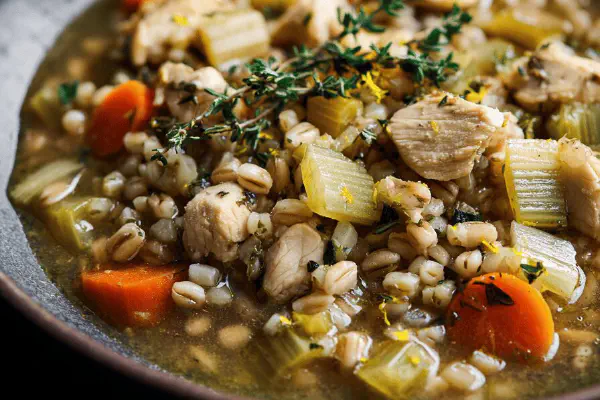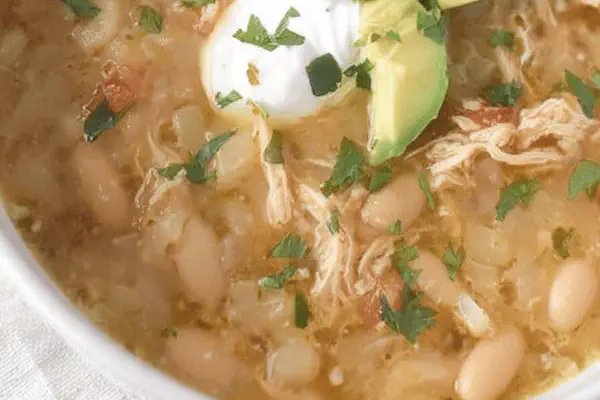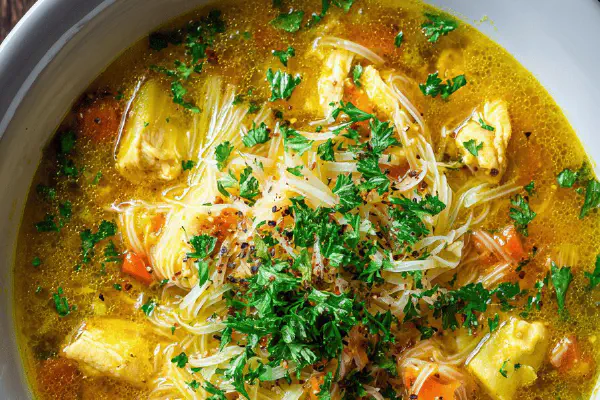Hearty Chicken Barley Soup

By Emma
Certified Culinary Professional
Ingredients
- 280 g chicken thighs boneless skinless diced
- 25 ml olive oil or butter; butter preferred for richness
- 2 leeks trimmed well and thinly sliced
- 2 large carrots peeled and diced
- 2 parsnips peeled and diced
- 3 garlic cloves minced
- 1.5 liters chicken broth low sodium
- 130 g hulled barley rinsed and drained
- 1 teaspoon fresh thyme leaves or dried (optional)
- Zest of half a lemon
- Salt and black pepper freshly ground
- Chopped fresh parsley or thyme for garnish
About the ingredients
Method
- Begin heating olive oil or butter in a heavy-bottomed pot over medium-high heat. The oil should shimmer but not smoke. Toss in diced chicken in one layer, no crowding. Let brown undisturbed until golden on one side, about 4-5 minutes. Flip quickly to color the other faces; you want caramelization not stew.
- Add sliced leeks, carrots, and parsnips to the pot. Stir vigorously, scrape browned bits at bottom with a wooden spoon. Cook for 3-4 minutes until veggies sweat and soften slightly but retain some bite. Aromas will deepen. Toss in garlic last to avoid burning, stir for 30 seconds.
- Pour in chicken broth to cover ingredients. Throw in rinsed barley and sprinkle thyme leaves over top. Stir to mix. Increase heat until you see a gentle vigorous boil, then immediately reduce to low to maintain a simmer. Cover with a tight lid.
- After 40 minutes, remove lid. Visual check crucial here. Barley should have a tender chew, plumped but not mushy. Vegetables soft and integrated. If broth level looks low, add small amounts of hot water or broth to keep soupy consistency.
- Season with salt and freshly cracked black pepper. Stir in lemon zest to cut through richness and bring a subtle brightness. Taste repeatedly. Adjust seasoning incrementally; barley can muddle salt but final balance is key.
- Serve piping hot in wide shallow bowls. Garnish with fresh parsley or thyme leaves for color and herbaceous punch. The texture layering - chewy barley, tender veggies, rich chicken - is everything.
- Leftover soup? Refrigerate upon cooling. Barley swells overnight absorbing excess broth; thin with water or broth before reheating. Use a lid to minimize moisture loss. Reheat slowly on the stove to preserve texture.
Cooking tips
Chef's notes
- 💡 Heat fat steady medium-high. Not too hot or chicken burns before browning. Flip chicken once golden, quick but gentle. Crowdless pan is key; steaming kills crust. Chicken thighs hold moisture better than breast. Texture forgiving with longer simmer. Watch for oil shimmer, not smoke; too hot burns flavor fast.
- 💡 Add garlic last in veggie sauté. Garlic burns easy and bitter if tossed early. Leeks, carrots, parsnips sweat longer; they soften but keep bite. Stir often but gently; scrape fond bits with wooden spoon to lift flavor. Don’t overcook roots; mushy dulls soup. Garlic aroma sharp but short burst, final minute only.
- 💡 Barley rinsed well—dust, starch off or clumps form. Barley swells slow then fast around 35-40 minutes. Keep lid tight to hold steam, but check liquid level often. Add hot water or broth if too thick; thin soup better than gluey mass. Simmer low, steady, not boil wild. Bubbles gentle but consistent. Barley texture key feature here.
- 💡 Salt late, barley absorbs salt dulling taste if early. Season gradually, taste repeatedly. Lemon zest last; brightness without juice avoids soup body change. Fresh thyme optional, but adds subtle lift if available. Garnish parsley or thyme chopped fine for visual punch and herb smell right before serving. Keeps aroma fresh, not cooked down.
- 💡 Leftovers thicken as barley keeps absorbing. Reheat slowly—microwave with lid to trap moisture or stove low heat with splash broth. Thin with water if too thick or dry. Barley gluey? Add acid or fresh herbs to brighten and break monotony. Freeze okay but texture suffers; fresh leftovers best within 48 hrs.
Common questions
Can I substitute chicken breast?
Breast dries fast. Use thighs if possible. If breast, watch closely, shorter brown time, add liquid sooner. Texture less forgiving but doable.
What if barley is gummy?
Barley overcooked or lid off too long. Add hot water broth thin it out. Next try low simmer, covered. Rinse barley well before cooking to remove starch. Use finger test: chewy, not mushy.
Using frozen veggies instead of fresh?
Fine but drain well after thawing so broth doesn’t water down. Texture softer; adjust cooking time less. Watch liquid levels, frozen release water. Good fallback to fresh but expect subtle flavor difference.
How to store leftovers?
Refrigerate cooled quick. Barley continues absorbing liquids overnight; add water or broth before reheating. Freeze okay but texture change. Reheat slow on stove or microwave with cover to keep moisture. Avoid reheating multiple times.



